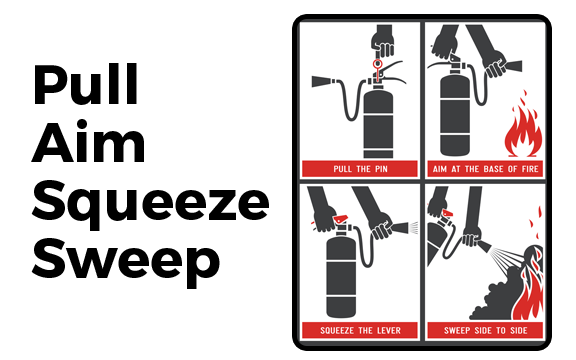
The Arlington Fire District began in the roots of a volunteer company called Arlington Engine Company Number 1, which had evolved out of the American Chemical Protection Company in the early 1920s. Read More...
Board of Fire Commissioners
Locations and contact information. FOR ASSISTANCE IN A FIRE OR MEDICAL EMERGENCY, DIAL 911. Read More...
Pumpers, Rescue Truck, and Aerial Platform. Read More...
Incident Chain of Command and Administrative Chain of Authority. Read More...
Arlington Fire District Coverage Map - Download Available.
Develop a Family Emergency Plan
How safe is your home?
What to do in case of fire
You can become a Volunteer Firefighter, Fire Police, Emergency Medical Technician. Read the Requirements for each Position. and fill out a Membership Inquiry Form today! Read More...
Board of Fire Commissioners
Current Board Meeting Agenda
Public Records Available Prior to Board Meeting
Board Meeting Minutes - (Not Yet Approved)
Latest Board Meeting Audio
Treasurer's Monthly Financial Report
Adopted Budget
Approved Board Meeting Minutes
Approved Abstracts 2024 | 2023 | 2022 | 2021
Archived News
Board Meeting Audio
Budgets
NYS Annual Financial Update Document
Independent Auditor Report
NYS Comptroller Report Of Examination
Fire Safety and Prevention Tips
Requesting Public Records -
FOIL Policy | Form
Notices, Policies, Forms
Current and archived audio from all meetings is available here
Get automatically notified on new audio at:
![]()
![]()
Coloring Pages
Sparky the Fire Dog Web Site
US Fire Administration Website Keeping Kids Safe
Fire Station - Learn about Firefighters, Fire Safety, Trucks & More …available at the App Store for iPhones, iPods and iPads featuring Arlington Fire District!
The following controls allow you to increase and/or decrease webpage text size as well as to return text to its default size. Close this window first before using the controls to resize webpage text.
Hold down the Ctrl key while pressing the + (plus) sign; for Mac users, hold down the command (Apple) key while pressing the + (plus) sign.
Hold down the Ctrl key while pressing the - (minus) sign; for Mac users, hold down the command (Apple) key while pressing the - (minus) sign.
To return to DEFAULT text size hold down the Ctrl key while pressing 0 (zero); for Mac users, hold down the command (Apple) key while pressing 0 (zero).
Fire Prevention and Education
Who should have a CO Detector?
Portable Fire Extinguishers

Home Fire Safety Tips
These Are Simple Changes That Could Save Your Life:
Home Fire Safety Checklist
Winter Fire Safety Tips for the Home
|
Item
|
Who to Contact
|
|
Driver’s license
|
Local department of motor vehicles
|
|
Bank books
|
Your bank, as soon as possible
|
|
Insurance policies
|
Your insurance agent
|
|
Military discharge papers
|
Local Veterans Administration
|
|
Passports
|
Local passport office
|
|
Birth, death, marriage certificates
|
State Bureau of Records in the state of birth, death or marriage
|
|
Divorce papers
|
Circuit Court where decree was issued
|
|
Social Security or Medicare cards
|
Local Social Security Office
|
|
Credit Cards
|
The issuing companies, as soon as possible
|
|
Titles to deeds
|
Records department of city or county in which the property is located
|
|
Stocks and bonds
|
Issuing company or your broker
|
|
Wills
|
Your lawyer
|
|
Medical records
|
Your doctor
|
|
Warranties
|
Issuing company
|
|
Income tax records
|
The Internal Revenue Service Center where filed or your accountant
|
|
Auto registration title
|
Department of Motor Vehicles
|
|
Citizenship papers
|
The U.S. Immigration and Naturalization Service
|
|
Prepaid burial contracts
|
Issuing company
|
|
Animal registration papers
|
Society of registry
|
Space Heater Safety Tips
Kerosene Heater Safety Tips
Vacation Checklist
Weather Hazards Awareness
|
Adams, MA
WWF-48 162.525 MHz |
Frewsburg
162.525 MHz |
New York City
KWO-35 162.550 MHz |
|
Albany
WXL-34 162.550 MHz |
Gore Mountain
KSC-43 162.450 MHz |
Norwich
KHC-49 162.525 MHz |
|
Binghamton
WXL-38 162.475 MHz |
Ithaca
WXN-59 162.500 MHz |
Riverhead
WXM-80 162.475 MHz |
|
Buffalo
KEB-98 162.550 MHz |
Kingston
WXL-37 162.475 MHz |
Rochester
KHA-53 162.400 MHz |
|
Call Hill *
WXN-29 162.425 MHz |
Little Valley
WWG-32 162.425 MHz |
Spencerport
162.450 MHz |
|
Cooperstown
WWH-35 162.450 MHz |
Lockport
162.500 MHz |
Stamford
WWF-43 162.400 MHz |
|
Cornwall, CT
WWH-33 162.500 MHz |
Marlboro, VT
WXM-68 162.425 MHz |
Syracuse
WXL-31 162.550 MHz |
|
Egremont, MA
WXM-82 162.450 MHz |
Mt. Ascutney, VT
WXM-44 162.475 MHz |
Utica
WXM-45 162.425 MHz |
|
Elmira
WXM-31 162.400 MHz |
Mt. Mansfield, VT
KIG-60 162.400 MHz |
Walton
WWH-34 162.425 MHz |
|
Erie, Pa
KEC-58 162.400 MHz |
Mount
Washington * WXN-55 162.450 MHz |
Watertown
WXN-68 162.475 MHz |